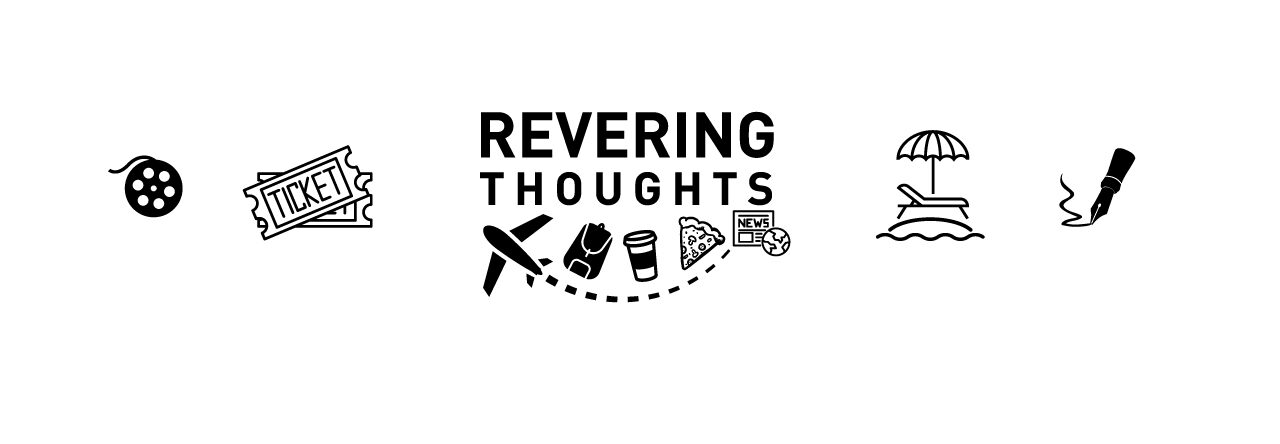An uphill walk of close to 2 km in the hot-humid climate after a tiring bus journey with cramped-up leg space, we reached Zostel. And this view, right here, made it all worth it.

As I write this Gokarna Travelogue, I’m taken back to the town that I’m definitely going to visit again. Apart from the beaches, what excited me was- Zostel. When places live up to their hype, which happens rarely, there’s nothing that beats that in making you feel good.
Where is Gokarna?
Gokarna is a temple town on the borders of Karnataka and Goa. Located at about 500kms away from Bangalore.
How to reach Gokarna?
A bus journey of about 12 hours which costs you 600-700 INR or a longer 16-hour journey via train which can be cheaper can be taken to reach Gokarna.
Here’s an illustrative map of Gokarna comprising of beaches and temples.

The beaches in Gokarna include the main Gokarna beach, Kudle, Om, Half-moon and Paradise beach. There’s another rocky beach between half-moon and Paradise – aptly referred to as the Hell’s beach. We covered this as part of our 5-beach trek on the second day of our trip.

Hungry and tired, we decided to find solace in the food served at the Zostel restaurant along with the amazing view for company. Decent pizza and a little extra-fried chicken with a side salad along with orange juice, while we settled down adjusting to the heat.


After a somewhat heavy-lunch, we curled up in our dormitory, instead of sweating it out in the humid sun.
Headed out in the early evening for a walk around the market leading to the Gokarna beach. The temple town was active and yet even in the hustle-bustle was calm.
The beach is quite clean and less crowded. I decided to let Nehru’s pre-independence words flow into my mind through the ‘discovery of India’.

Watching people observe puja and Surya namaskar, as the sun went down for the day is quite something.
Here’s when I saw an old man performing a ritual which intrigued me.
We treated ourselves to a simple vegetarian lunch of Paneer+Rotis, along with a minty drink called, ‘Lemon Mint Nana’ which was quite good. We repeated the same the next day as well.

We had decided to head out early for the 5-beach trek and pack up our stuff and keep it safely in Zostel’s Common room.
The 5-beach trek included Kudle-Om-Halfmoon-Hell’s beach before reaching the Paradise beach. We had our breakfast at Om beach in one of the joints which

We had our breakfast at Om beach in one of the joints which was open in the early hours of the morning, overlooking the sea. Bread omelet and black coffee to start the day. What more can one ask for?

The post-Om beach trek towards HalfMoon was the best of all. Walking over the hill in the tiny pathways in-between trees was an entirely different experience. At one point, we had this majestic view of the entire sea and standing atop that section of the hill, making us feel so small.

Since we were walking along the sea, over the hills, we came across boards which read like, ‘No way! Many people DIED here’ and we might have felt a little scared had it not been for the funny font and dripping paint.

As we crossed the half-moon beach and came across these amazing smallish gorges, we hid from the sun as the heat increased.
[Tip: Start your trek before 6 AM so as to avoid the harsh sun]
As we reached Paradise beach, which is a small section in the beach stretch, I just took out my book to read, while my friend took a dip in the sea. Of course, I couldn’t resist the water much longer and stripped down to dive-in.

Instead of the trek, there is the option to take the boat which makes stops at all the beaches for you to do a quick photo-session if that’s what you want. While returning we actually took a boat to Om Beach instead of heading back on foot.
The view is great from the boat and you can also spot a few Dolphins. But this still doesn’t beat the trek and I’d highly recommend you to to do the trek.

We were hungry and a cheesy La Polo Chicken Pizza along with King Fish became our lunch. Fish wasn’t great but the cheese made up for it.
In the last few hours in Gokarna, we went back to Zostel and took rest in their common room. I loved this part about Zostel, even after you’ve checked out, you can still keep your stuff, chill in their common room (which is amazing) and freshen up in the common bathroom as well.
We had to board our bus for Bangalore by 7 PM and a quick stroll around the beach, shopping and some home-made ice-cream and peanut-butter to bring back home, and a goodbye to Gokarna.

There are few places that you visit and then decide there itself that you’re gonna head back here soon. Gokarna is that place. I liked it better than Goa and this sits right at the top of beaches in India that I’ve visited, along with Varkala and Malpe.

